Driven to discover
CVM researchers’ decades of dedicated work has and continues to unravel the mysteries behind genetic diseases across numerous species
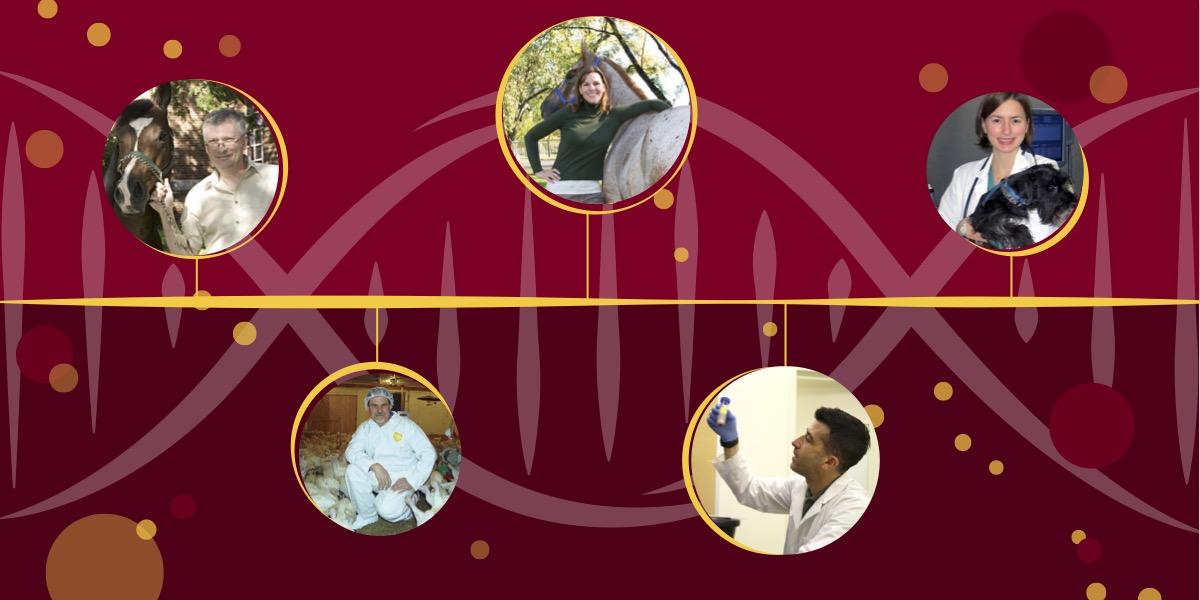
CVM researchers’ decades of dedicated work has and continues to unravel the mysteries behind genetic diseases across numerous species
Over the last 50 years, research into the genetic causes of disease has revolutionized the way we think about animal and human health.
Fueled by seismic advances in DNA sequencing and computational technology, researchers have moved beyond identifying individual genetic mutations that underlie simple genetic diseases—once an enormous feat that itself required years of work.
Today, they’re focused on untangling complex conditions that involve interactions between dozens or even hundreds of genes that may be modulated by a host of environmental influences. And College of Veterinary Medicine researchers have been on the cutting edge of these developments for decades.

You might say that genetics research is built into the DNA of CVM. One of the founding faculty members of the college, Dr. Al Weber, was renowned in the field of cytogenetics, which uses microscopic analysis to study the structure of chromosomes. Cytogenetics was for many decades the only way to investigate the role of genetics in health and disease, and Weber’s work provided a model of how genetic technologies could be applied in veterinary research—even as those technologies evolved exponentially to enable modern molecular genetics.
The first wave of molecular geneticists at CVM—researchers using new tools to study DNA at the molecular level—included Dr. James Mickelson, who arrived at the college in 1982. Working with Drs. Charles Louis and Dr. William Rempel, Mickelson’s early research focus was malignant hyperthermia, a severe and potentially fatal reaction to anesthesia that has similar genetic roots in humans and pigs.

“At that time, the tools to study genetic disease were quite limited,” he says. In order to find the genetic cause of a disease, researchers often had to perform years of experiments to identify the protein where a genetic mutation likely occurred. Sometimes, if comparable genetic information was available from humans or other species, they could also make an educated guess about which gene was likely. Then the identified gene was sequenced to determine the order of the thousands of chemical “base pairs” that make up the DNA within that given gene. The sequence of the gene from healthy animals could then be compared to the sequence of the same gene in animals with the disease, in order to try to identify the difference. If no mutation was found, it was back to the drawing board—starting over to identify a new candidate gene out of tens of thousands.
It was painstaking work involving complicated wet-lab processes and slow, unsophisticated computer programs. In the case of malignant hyperthermia, the team spent nearly eight years determining the impacted protein. Once the protein was identified, the gene for that protein could be sequenced, and a genetic test to detect the mutation was developed.
These advancements had an enormous impact on pig farming and production since it was now relatively easy to breed out the mutation. And they pushed human medicine forward as well, helping to enable the development of a genetic test for people, to ensure that those carrying a mutation in the same gene were not subjected to anesthetic procedures that would cause a reaction.
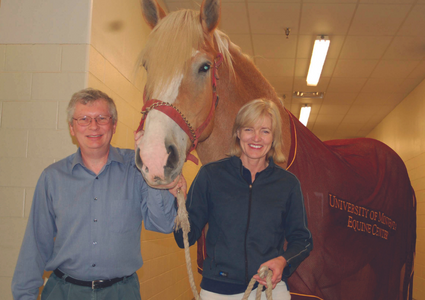
Mickelson found ready collaborators in a wave of new faculty that CVM welcomed in the 1990s who brought with them an interest in genetic disease. He soon began working with Dr. Stephanie Valberg, and they were successful in identifying the genetic causes of lethal white syndrome (LWS) and glycogen-branching enzyme deficiency (GBED) in horses, among the first genetic diseases solved in that species. Understanding the genetic roots of these conditions meant that breeders could make more informed decisions in order to avoid passing on susceptibility to debilitating or deadly diseases and veterinarians could definitively diagnose suspected cases.
These developments were groundbreaking, but the work to get there was laborious and highly dependent on the current knowledge of human genetics. In order for animal genetic research to advance more quickly and tackle more complex problems, researchers needed better tools.
One of the most important advances around the turn of the 21st century was the development of genetic maps, which identify “landmarks” in the genome that researchers can use to focus their efforts to locate a specific gene.
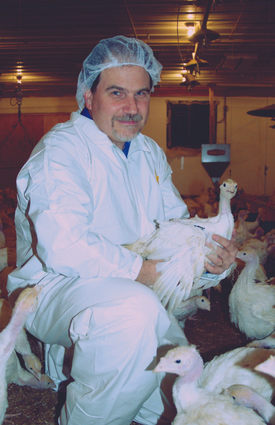
“A chromosome is like a highway,” Mickelson says. “The different spots along the highway—gas stations, restaurants—are like the genes along the chromosomal highway. You might not know where a given stop is, but if you have a mileage marker along that road, it can help you find the restaurant you’re looking for.” In other words, a map of the entire genome, constructed using certain DNA markers, allows researchers to hone in on the location of a particular gene much more efficiently, potentially shaving off years of work to find a mutation.
CVM researchers played significant roles in international collaborations that came together through the 1990s to develop genome maps for cattle, pigs, horses, dogs, and poultry. Kent Reed joined these efforts at the college in 1998, first supporting early efforts in swine and cattle mapping. Then, with major funding from the USDA, his team was the first to map the full genome of the turkey. Completed genome maps in any species represented monumental successes, opening up opportunities for new and faster developments in genetic research.
CVM researchers were also among the first to utilize maps to make significant new discoveries. For example, Dr. Molly McCue, now CVM’s associate dean for research, did her doctoral work on polysaccharide storage myopathy (PSSM), which represented the first successful use of mapping to zero in on the genetic cause of a disease in horses. PSSM, which is seen in over 20 breeds and affects up to 60 percent of horses in some breeds, is a painful and sometimes debilitating muscle condition related to cells’ sugar production.
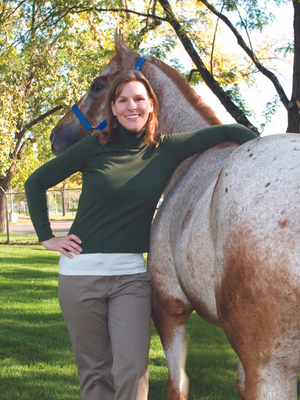
Similarly, Mickelson and Dr. Ned Patterson used the canine genome map to identify the cause of canine exercise-induced collapse (EIC), which is a highly frequent condition in Labrador retrievers and related breeds that severely limits a dog’s ability to perform strenuous exercise.
For both PSSM and EIC, identifying the mutation allowed researchers to then develop a genetic test for the disease—which informs care decisions to prevent the onset of symptoms, and breeding decisions to prevent passing the disease on.
Even as major developments involving genetic mapping were underway, all researchers had their eyes on the monumental and nearly-complete project to sequence the entire human genome—which would quickly lead to yet another revolution in modern animal genetics as well.
The launch of the ambitious Human Genome Project in 1990 by the Department of Energy and the National Institutes of Health pointed to the next great leap in genetics research. Completed in 2003, the project sequenced all 3.2 billion base pairs of the human genome—essentially creating the most detailed map possible, showing not just mile markers, but every single gas station, restaurant, and roadside attraction along the chromosomal highway. The project paved the way for the full sequencing of other species to quickly follow suit.
“I was amazed by how fast the sequencing of genomes overtook things,” Reed says. “The period of time when we were finishing our work on the turkey map was about the same time that the human genome sequence draft was being released. I thought it would be a long time before we were able to sequence the turkey, but it happened a couple of years later.”
The technology for whole genome sequencing got faster and cheaper–quickly.
“In less than a decade, the cost of whole genome sequencing went from many millions of dollars to a couple of thousand dollars,” McCue says. “Now I can sequence an equivalent whole genome for $200–300.”
It’s an exciting shift for genetic researchers. As Reed says, new sequencing technologies have “changed how we approach biology—and it’s been fun to grow up professionally in that era and see how it’s impacted the questions we ask and how we approach them.” Access to cheaper and faster data means that researchers can tackle more complex diseases and more complicated questions.
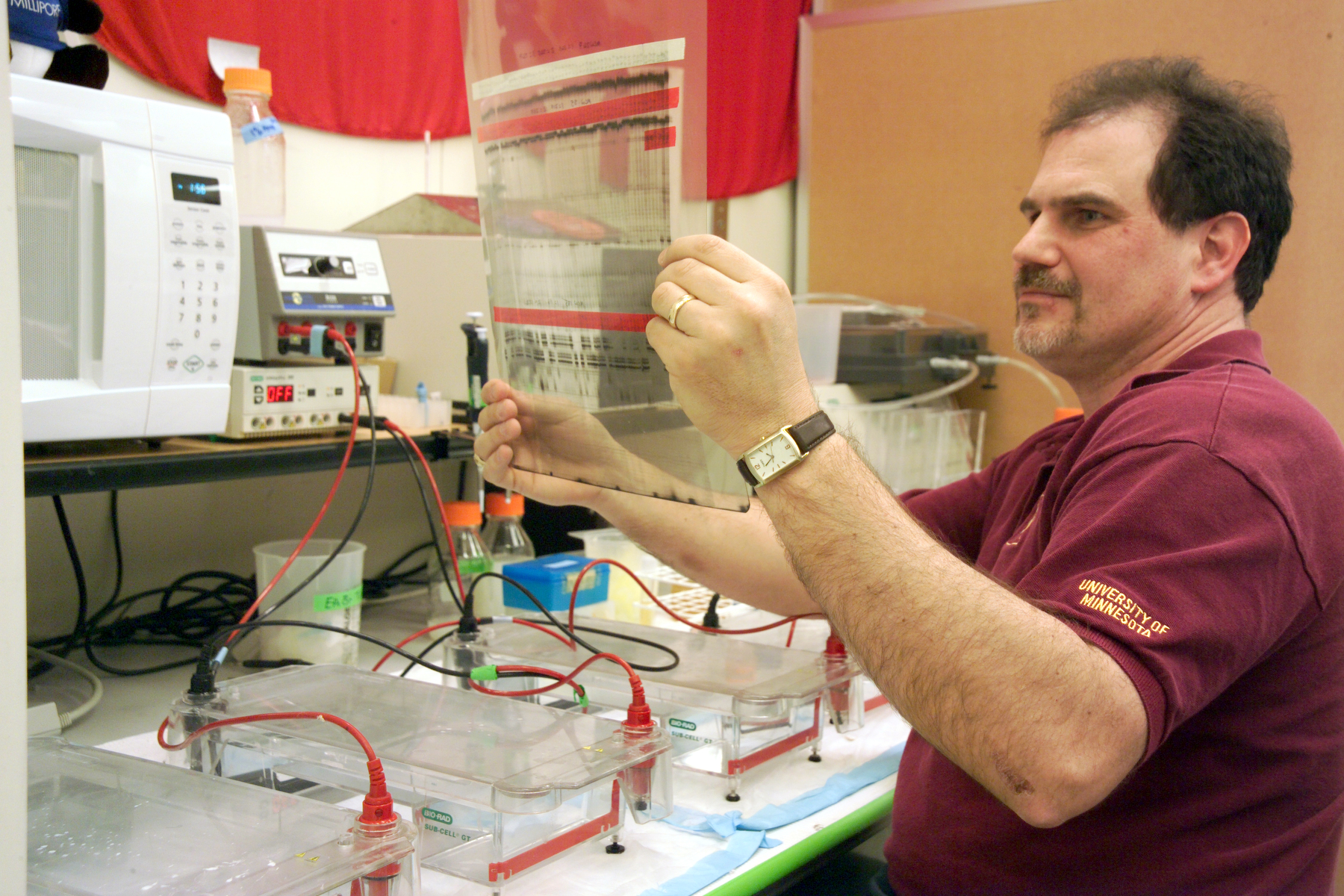
“While the single-gene diseases are important and can be very dramatic, they’re rare compared to things like metabolic and autoimmune diseases that may involve hundreds of mutations, and that are often impacted by environmental factors as well” McCue notes. “These things are more common and affect large numbers of animals and humans.”
Only decades ago, such research would have entailed scores of people devoting an entire career’s worth of work. And the primary locus of that work itself has shifted, moving from the wet lab to the supercomputer.
“If you look at how much computer storage space is required to analyze the sequence of one individual, it’s huge,” Mickelson says. “Now we’re comparing sequences from thousands of horses or dogs…genetics is increasingly becoming a computational undertaking.”
CVM continues to build on its strong history of genetics research, drawing on its unique internal resources such as the Veterinary Medical Center and the Clinical Investigation Center, along with partners across the University, such as the Minnesota Supercomputing Institute and the Genomics Center. These strengths have attracted the next generation of researchers, who are blazing new trails that connect genetics to myriad other aspects of disease and health.
Dr. Steve Friedenberg joined the CVM faculty in 2016, excited by the opportunity to collaborate with other genetic researchers at the Canine Genetics Lab and elsewhere in the college. His current research focuses on autoimmune disorders such as Addison’s disease, a complex and potentially life-threatening condition diagnosed in thousands of humans and dogs each year. Friedenberg is investigating not only the multiple genetic mutations contributing to an individual’s predisposition to the disease but also the environmental factors that may be at play in actually triggering the disease.
“Once we get to the stage of being able to predict dogs at high risk, we may be able to intervene to be able to keep them from getting the disease,” Friedenberg says. “The translational possibilities—the impact this could have on care—is amazing.”
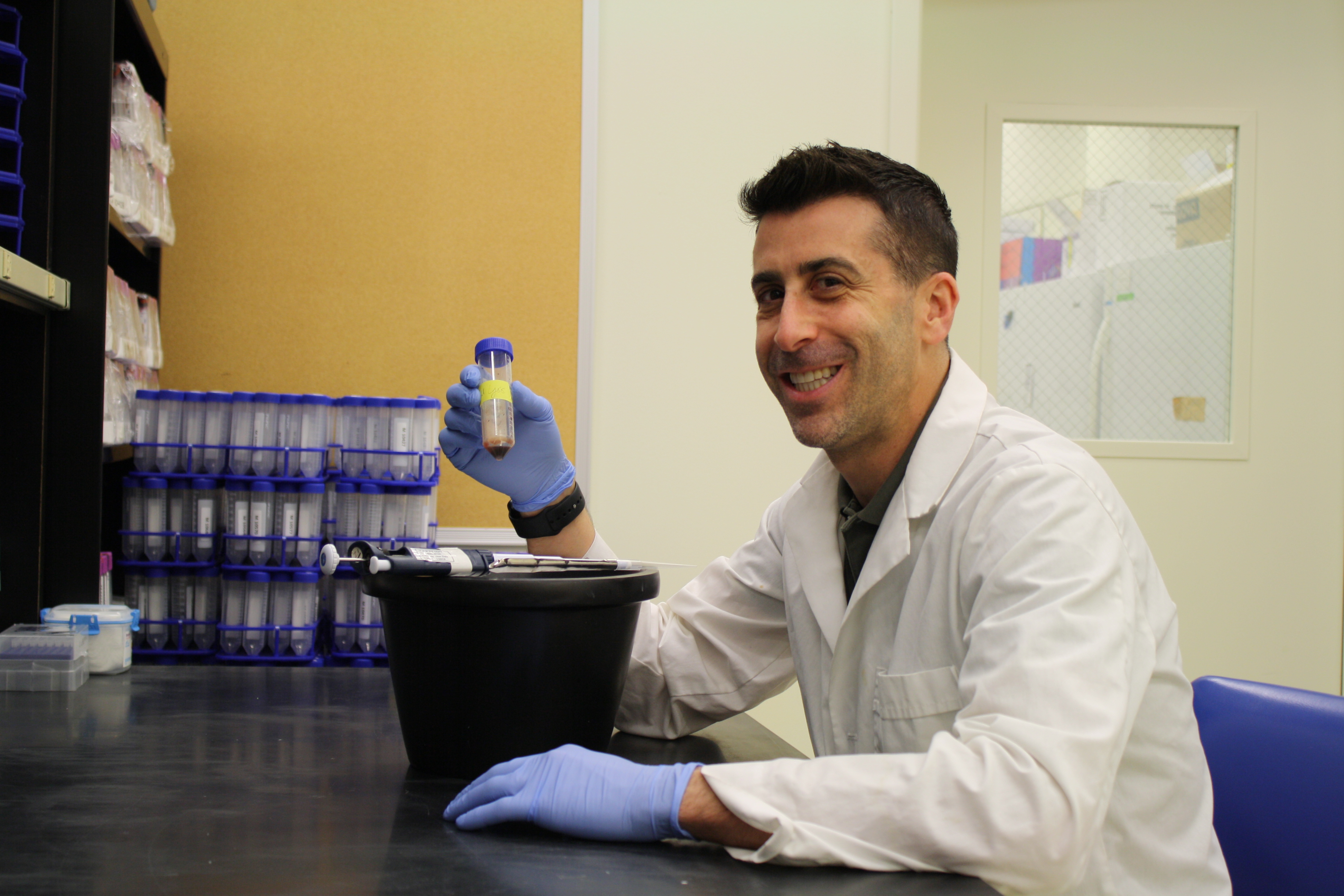
Dr. Eva Furrow was similarly drawn to the potential for collaboration at CVM, and she found fertile ground for genetic research at the Minnesota Urolith Center, which has a vast repository of data from the tens of thousands of urinary stone samples it receives for analysis each year. Her work on stone disease in dogs has led to the discovery of several genetic mutations that greatly increase the risk for kidney or bladder stone formation—findings with potentially significant implications for human development of the disease as well.

Armed with information about how these mutations work, researchers can examine how other genetic, behavioral, and environmental factors impact individuals’ development of the disease. “We’re moving toward precision medicine,” Furrow says. “There’s really been an explosion in our ability to get data about so many processes in the body, and in the tools we have to try to connect them to determine optimal patient care.”
The potential and the reach of developments in contemporary genetics is evident across the College. It informs cutting-edge research in everything from cancer care to infectious disease to breeding practices to nutrition. The horizon of possibilities for using genetic research to improve animal and human health has never been more expansive—and CVM researchers will continue to drive toward that future.